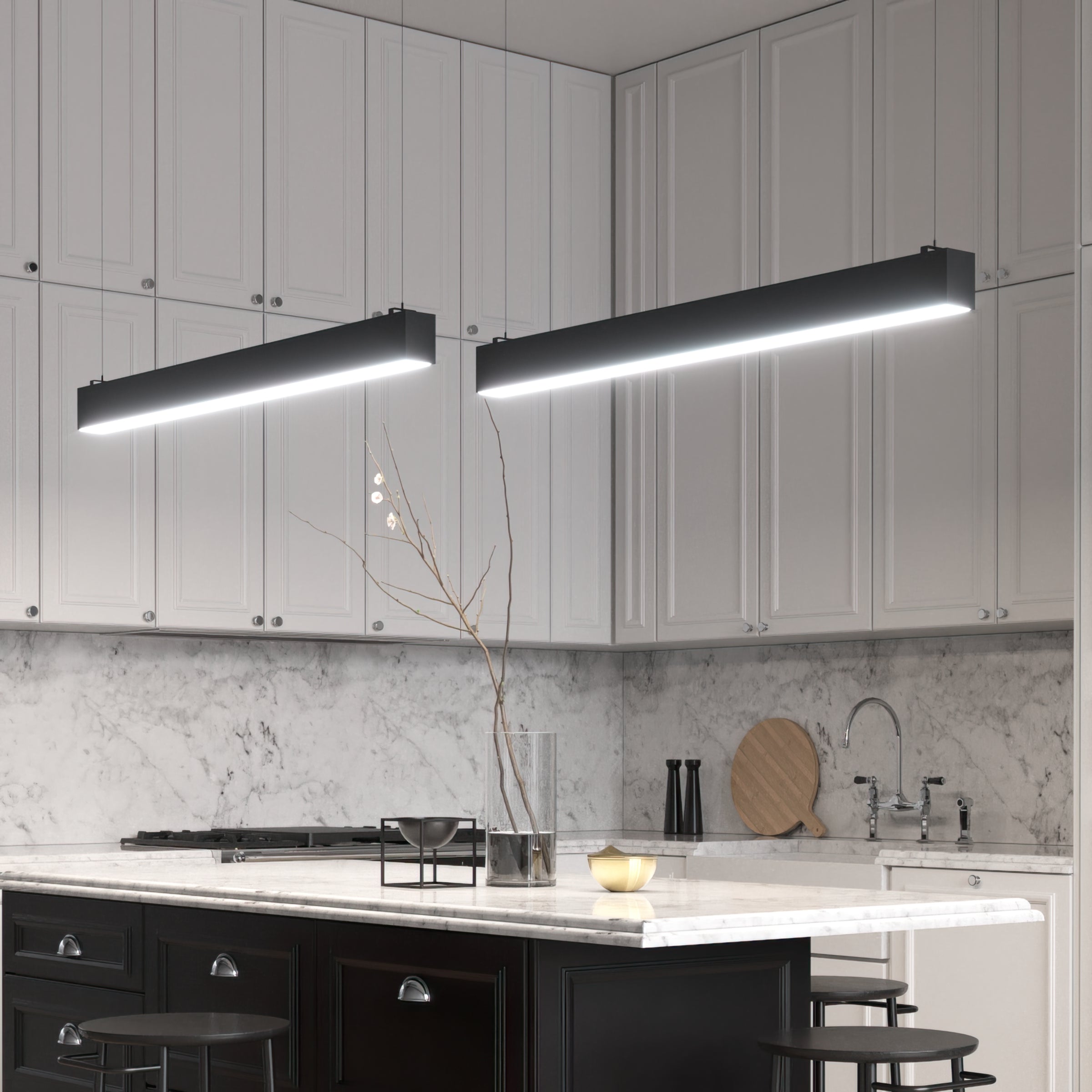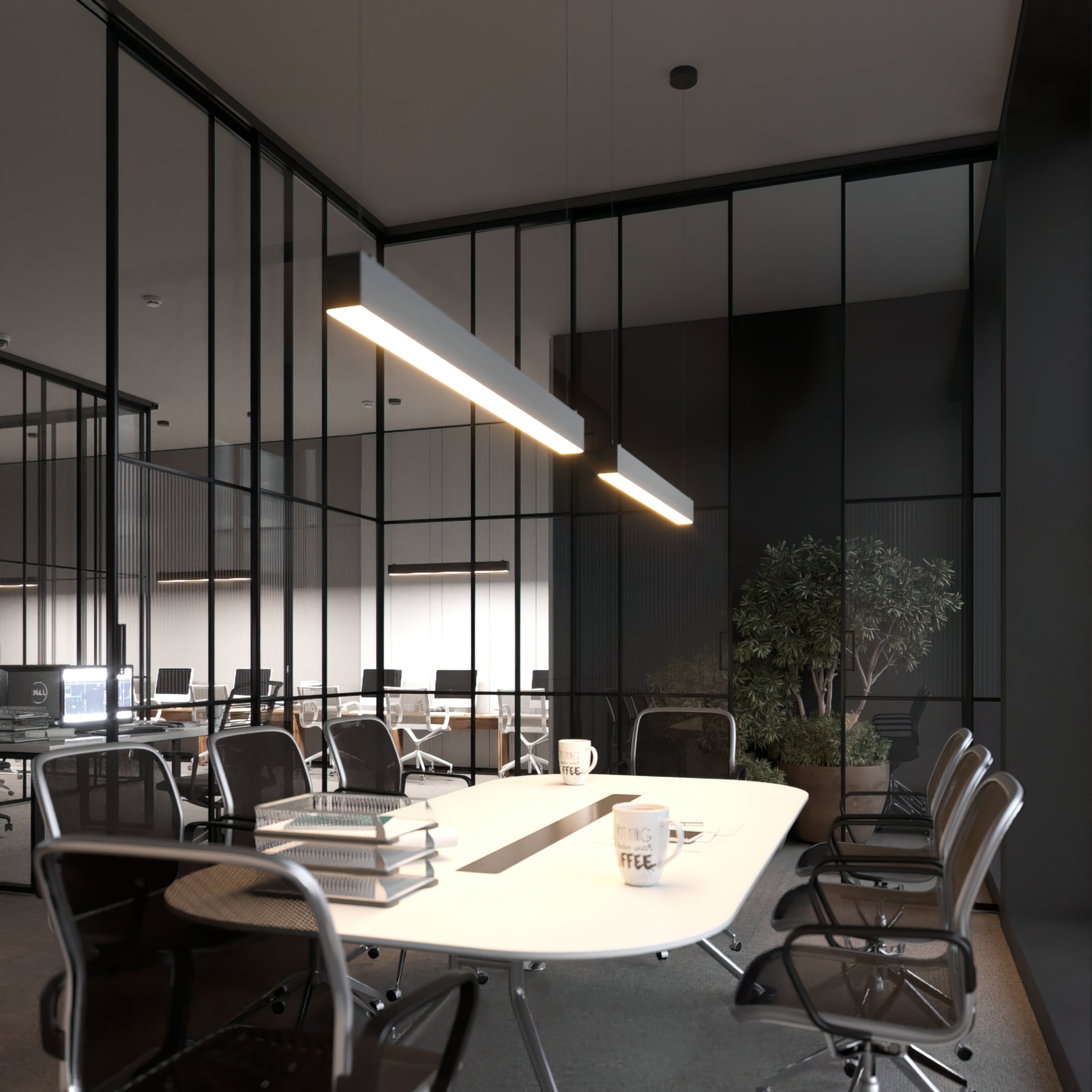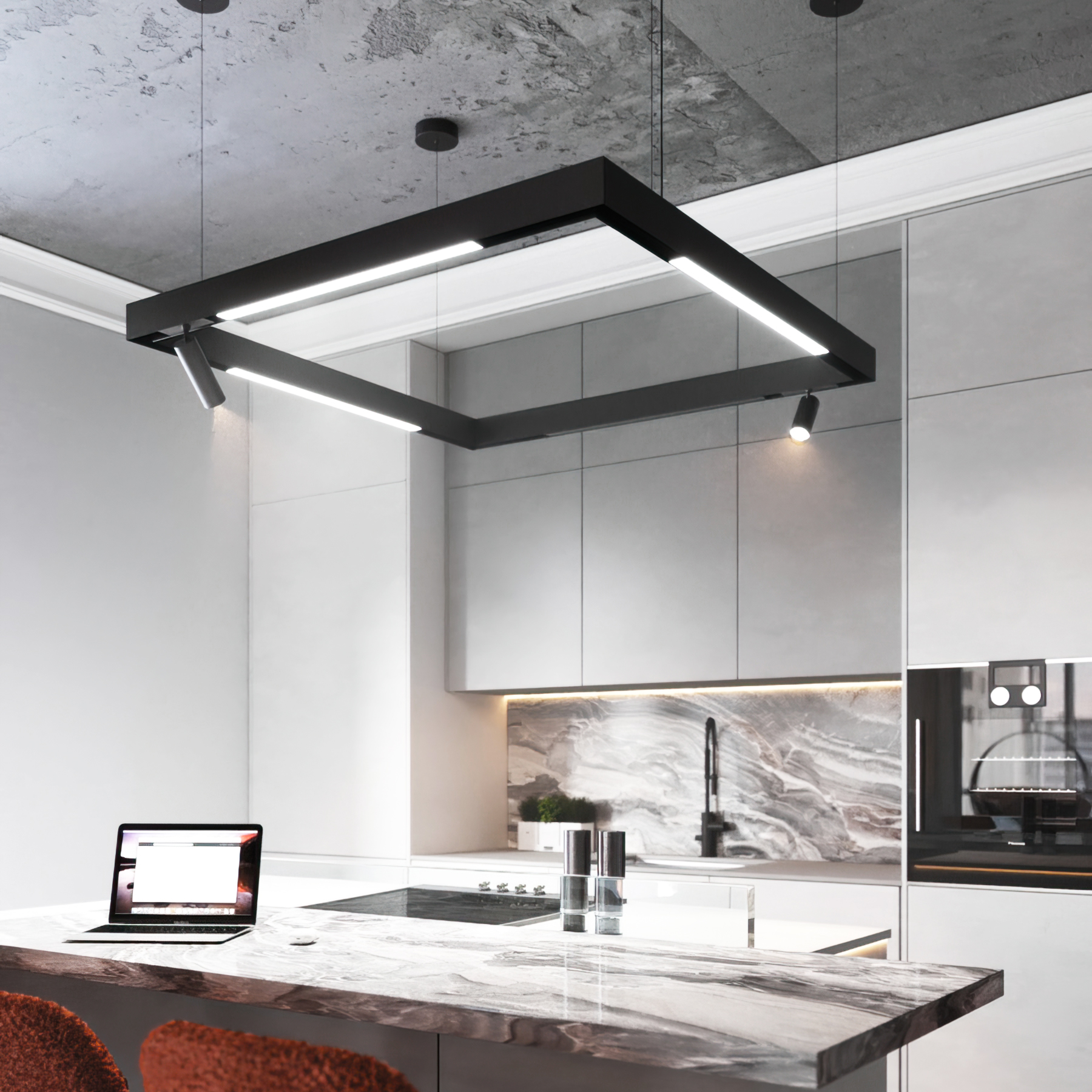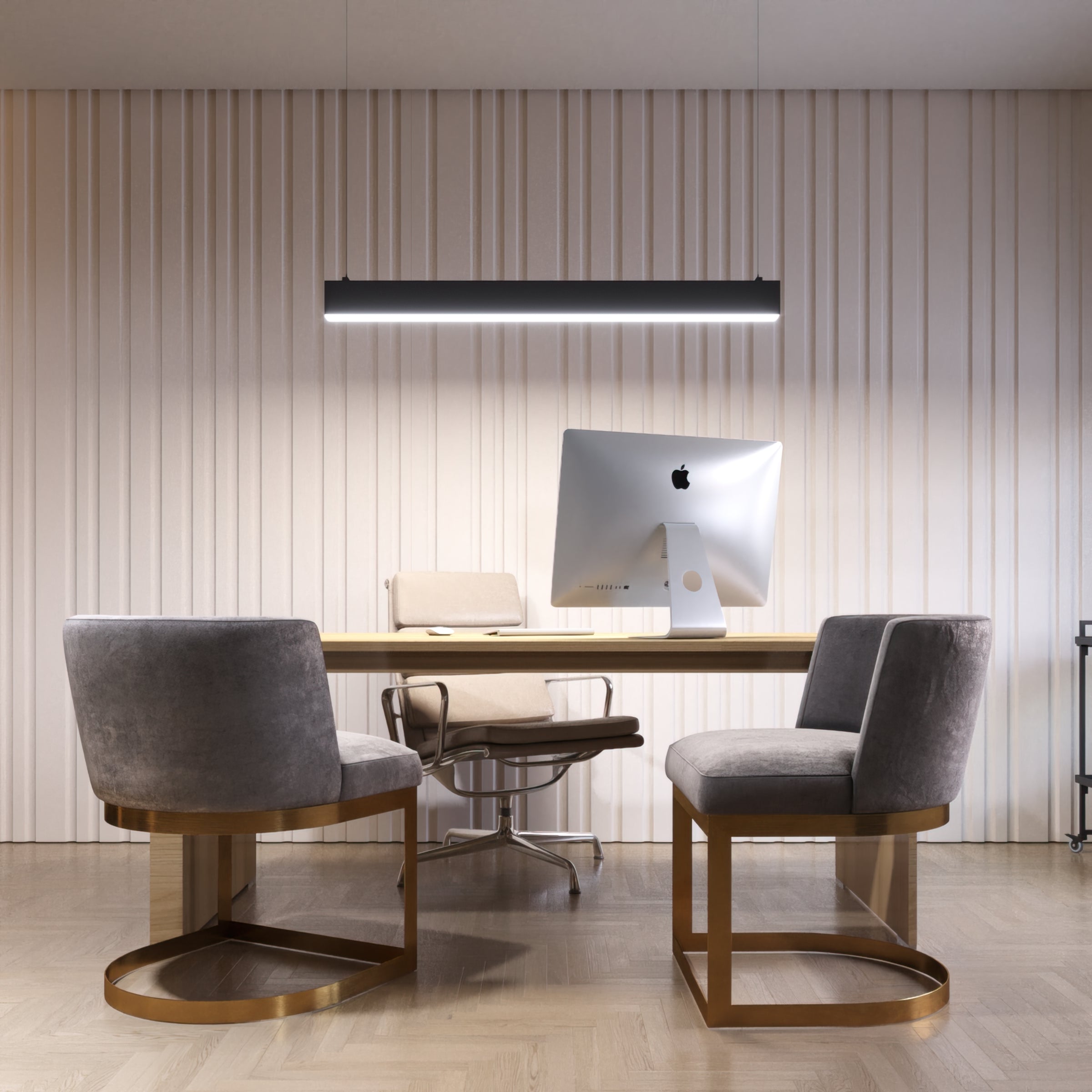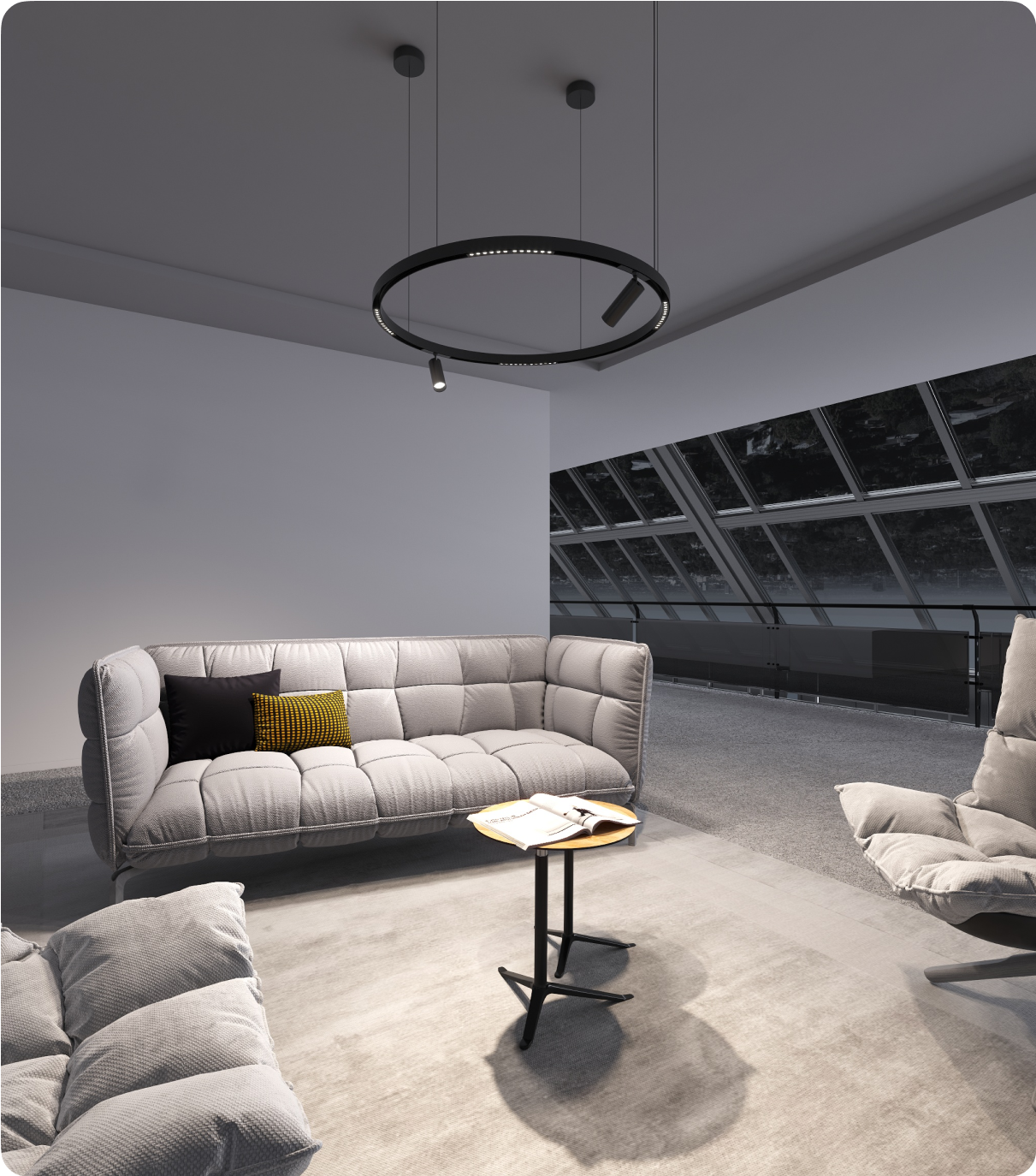Lighting is an important aspect of everyday life, and the type of lighting we use impacts our environment and well-being. Two common types of lighting are LED and fluorescent, but what is the difference between them? In this article, we'll explore the differences between fluorescent and LED lights cost and how they affect our energy consumption, health, and environment. Understanding the differences between these types of light can help you make informed decisions about the lighting options available to you. Let's dive in and uncover what is the better option: LED office lighting vs. fluorescent lighting.
LED Lighting
What is LED Lighting?
An LED is an acronym for a light-emitting diode. These tiny devices are made up of two electrodes, one positive and the other negative, that allow electricity to flow in one direction. They are composed of semiconducting material, which is a type of material that has an excess of electrons and holes, making it neither a good conductor nor a good insulator.
When electricity passes through the material, it excites the electrons, causing them to move from the negative electrode to the positive electrode. As the electrons move, they release energy in the form of photons, which we perceive as light.
The invention of LEDs has revolutionized the lighting industry and has paved the way for new and exciting advancements in technology.
Benefits of LED Lighting
LED lights are a highly durable and efficient alternative to fluorescent lights in the office. With a real-world life expectancy of at least ten years, LED lighting only needs to be changed once every five years on average, even when left on continuously. Unlike other bulb types, LEDs do not burn out or "blow," instead gradually decreasing in light output over time until they reach the end of their lifespan, producing only 70% of their original light output. This unique quality of LED light technology could revolutionize the world's energy usage for lighting, with the potential to reduce energy consumption by over 75%. Such an important reduction in energy usage would have a positive impact on the environment by decreasing carbon dioxide and other pollutant emissions. Additionally, LEDs are extremely energy-efficient, converting 95% of their energy into light, with only 5% wasted as heat, making them the eco-friendly choice for lighting. Therefore, it is essential to consider LED lighting when looking for ways to reduce energy consumption, decrease environmental impact, and save money in the long run.
Longevity
LED tubes are an excellent choice for all those who are looking for long-lasting lighting solutions. With a current LED specification measurement of enduring over 70,000 hours of testing, LED efficiency is significantly higher. This fact translates into significant cost savings over time, making LED tubes a smart financial investment. Furthermore, the extended lifespan of LED tubes is not only great for your wallet but also for the environment, as it means fewer tubes end up in landfills.
In addition to the extended lifespan, LED lighting is confident in the quality of its tubular products. This confidence is reflected in the 10-year end-to-end standard warranty that they offer on most of their LED tubes. This warranty gives you peace of mind, knowing that you won't have to worry about costly replacements for years to come.
LED tubes are designed to be energy-efficient. They consume less energy than traditional fluorescent tubes, which means you'll see lower energy bills. This means that not only you are saving money on replacements, but you're also saving money on your energy bills.
All in all, choosing LED vs. fluorescent cost is a reliable solution that will save you money in the long run while providing you with long-lasting, energy-efficient light.
Where to Use LED Lights
LEDs (Light Emitting Diodes) were originally developed for use in circuit boards for computers. Since then, LED technology has advanced significantly, and LEDs have now been adopted for a wide variety of purposes. They are now commonly used in traffic lights, lighted signs, indoor and outdoor lighting, as well as in gymnasiums, warehouses, schools, and commercial buildings.
One of the main advantages of LEDs is their suitability for use in large public areas, such as road lighting and parking lots. This is due to their ability to provide powerful and efficient lighting over a large area. Compared to low and high-pressure sodium lights, LEDs offer significant color advantages. Also, LED lights have a much longer lifespan than traditional lighting methods, making them a good option for both commercial and residential applications.
Fluorescent Lighting
What is Fluorescent Lighting?
Fluorescent light bulbs are a type of gas-discharge light that comes in tubes ranging from 48 to 84 inches in length. These tubes are coated with a phosphor material that emits visible light when the gas within the tube is ionized. Compact fluorescent lights (CFLs), on the other hand, are smaller tubes designed to replace standard incandescent bulbs as they are more efficient and longer-lasting. They work on the same principle as fluorescent light bulbs but are designed to fit in standard light sockets. CFLs are known for their energy efficiency as they use less power than traditional incandescent bulbs, produce less heat, and last longer. Additionally, they can be customized to fit a wide range of lighting applications. Despite being more expensive than incandescent bulbs, CFLs are a cost-effective investment in the long run as they consume less energy and last up to ten times longer than traditional bulbs.
Benefits of Fluorescent Bulbs
Fluorescent lighting has been gradually phased out due to increasing concerns about energy conservation and environmental protection. Standard fluorescent lamps are not energy-efficient and contain harmful chemicals and elements that require extra care and cost when disposing of them to avoid environmental contamination. Additionally, fluorescent lights, especially older ones, require more accessory parts to reflect or focus the luminous output of the bulb, leading to additional costs and wasted light. They also have a warm-up period and do not immediately reach optimum light levels. These drawbacks affect their performance and make them an inferior choice between fluorescent light vs. LED cost.
Some Peculiarities of Fluorescent Lighting
Where Fluorescent Lighting Is Usually Used
Fluorescent lighting is commonly used in warehouses, schools, and commercial buildings. In addition, CFLs are often used as a substitute for incandescent bulbs in residential settings.
Lifespan
Fluorescent tubes usually last 3-5 years before needing a replacement, but this varies depending on the ballast. If the ballast fails, the fluorescent tube will also fail. When fluorescent tubes start to fail, they may become blackened and flicker visibly, which can cause headaches and eye strain and be particularly harmful to those with photosensitive epilepsy. This is one of the drawbacks of fluorescent lighting when compared to LED lighting, as LEDs have a much longer lifespan and consume less power, making them the eco-friendly choice for lighting. Additionally, LEDs offer significant advantages in color and brightness, making them a superior option in terms of fluorescent vs. LED cost.
Mercury
Fluorescent lights are a cause for concern due to the use of mercury, which can be harmful to human health. When fluorescent bulbs break down, the mercury and phosphor inside them are released in gaseous form and pose a risk to human health. Although immediate effects may not be noticeable, long-term exposure can result in serious health problems.
UV Radiation
Fluorescent lights emit ultraviolet radiation, which can have adverse effects on health over long periods of exposure. The World Health Organization (WHO) has acknowledged that ultraviolet radiation in large doses can cause skin cancer and other harmful effects. Therefore, it is important to limit our exposure to these emissions from fluorescent lights.
Although these lights are marketed as safe, continuous exposure to radiation can be harmful, especially as fluorescent lights age and require more power, resulting in increased radiation. This is why it is important to replace them after a certain period of time. In addition, fluorescent lighting contains small amounts of mercury, which can be harmful to both humans and the environment. If not disposed of properly, the mercury can seep into the soil and water, contaminating them.
How to Choose the Type of LED Lighting?
Once a decision has been made to opt for LED lights vs. fluorescent in your facility, the next step is to choose the most appropriate type of LED lighting that can maximize energy savings and optimize workers' comfort and productivity. With such a wide range of options available, it can be a daunting task to select the right lighting. However, it is important to note that proper lighting can significantly reduce worker errors, prevent machinery accidents, decrease employee sleepiness, and reduce energy consumption. In order to choose the right type of LED lighting for your project, several factors should be considered. These include determining the number of fixtures required, establishing the desired light distribution and brightness level, and assessing the type of working environment. It is imperative to have a detailed understanding of these factors to make an informed decision. For more detailed information on how to light a warehouse, please refer to our comprehensive guide.
